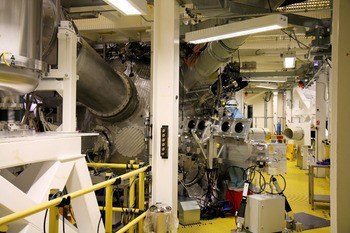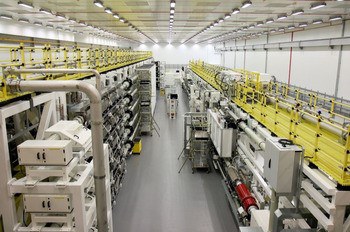Orion (Reading, UK)
Research highlights
Matter in extreme conditions
‘Modelling K shell spectra from short pulse heated buried microdot targets. [D Hoarty et al., High Energy Density Physics 23 178 (2017)]
Material Strength
‘X-ray diffraction data from shock-compressed copper: Some consequences of metallurgical texture. [J. M. Foster et al., Journal of Applied Physics 129, 245904 (2021)]
Laboratory Astrophysics (academic access)
‘Counterpropagating Radiative Shock Experiments on the Orion Laser. [F Suzuki-Vidal et al Physical Review Letters 119 055001 (2017)]
Magnetic recombination (academic access)
‘Observations of pressure anisotropy effects within semi-collisional magnetized plasma bubbles. [E Tubman et al., Nature Communications 12:334 (2021)]
EMP studies
‘Laser produced electromagnetic pulses: generation, detection and mitigation. [Fabrizio Consoli et al., High Power Laser Science and Engineering, Vol 8 e22 (2020)]
Expertise
Orion plays a key role in AWE’s core mission to support the safety, reliability and performance of nuclear warheads throughout their lifecycle under the UK’s ratification of the Comprehensive Test Ban Treaty (CTBT), which bans live testing. It can replicate the extreme temperatures, pressures and densities found at the heart of a nuclear explosion for the study and understand the physics phenomena that occur in these environments.


Orion also dedicates a proportion of its time for collaborative academic research in the UK with international collaboration, which is managed through an academic peer-review process by the Central Laser Facility at the Rutherford Appleton Laboratory. Academic research ranges from the conditions relevant to inertial confinement fusion, planetary and solar physics, high-energy particle acceleration, and much more.
(Pictures courtesy of AWE - The Orion laser hall and Orion’s 4m diameter target interaction chamber)


